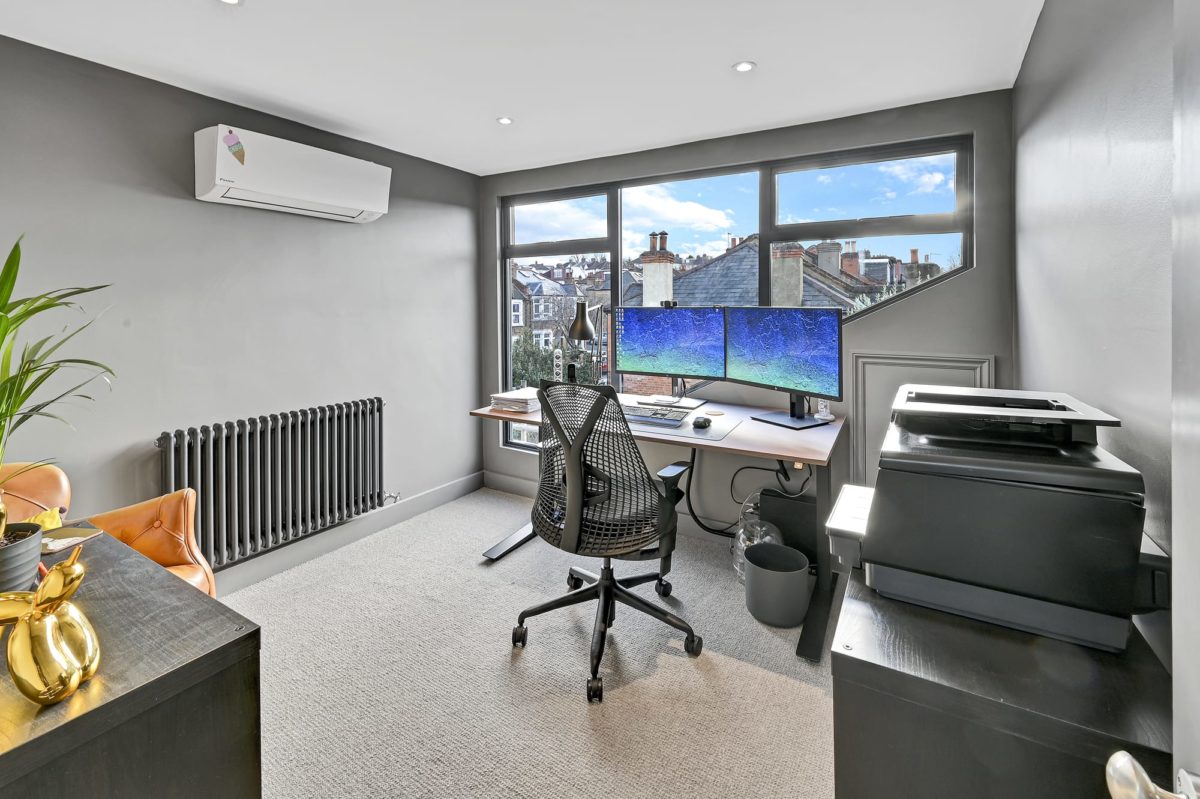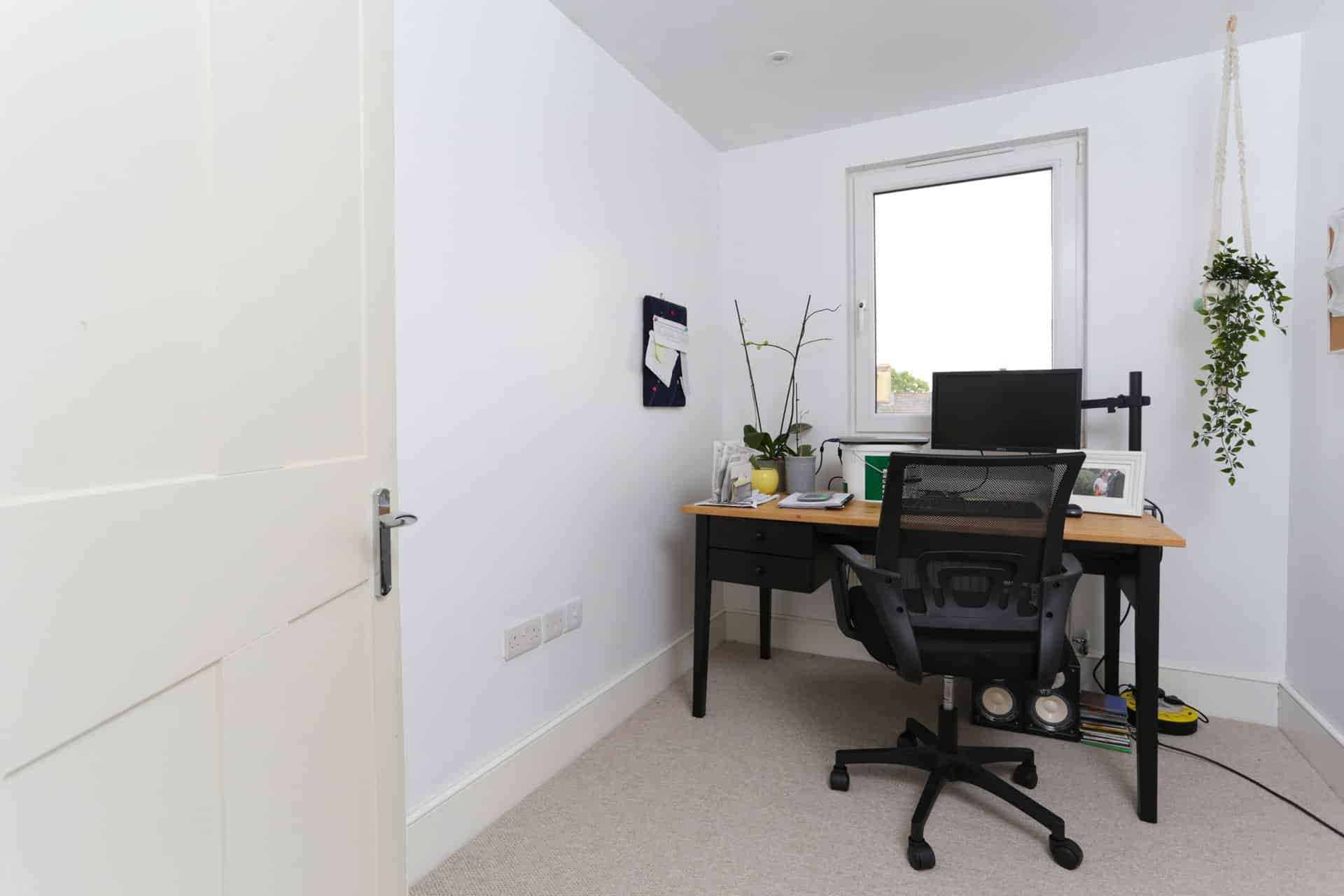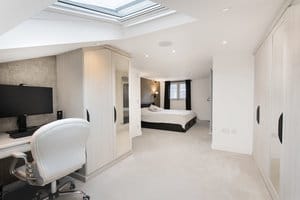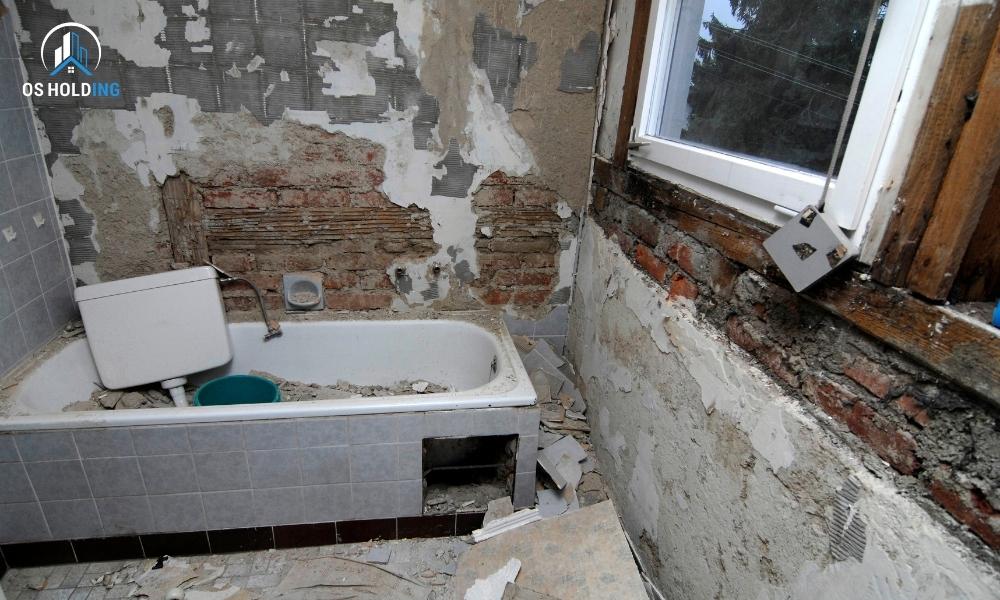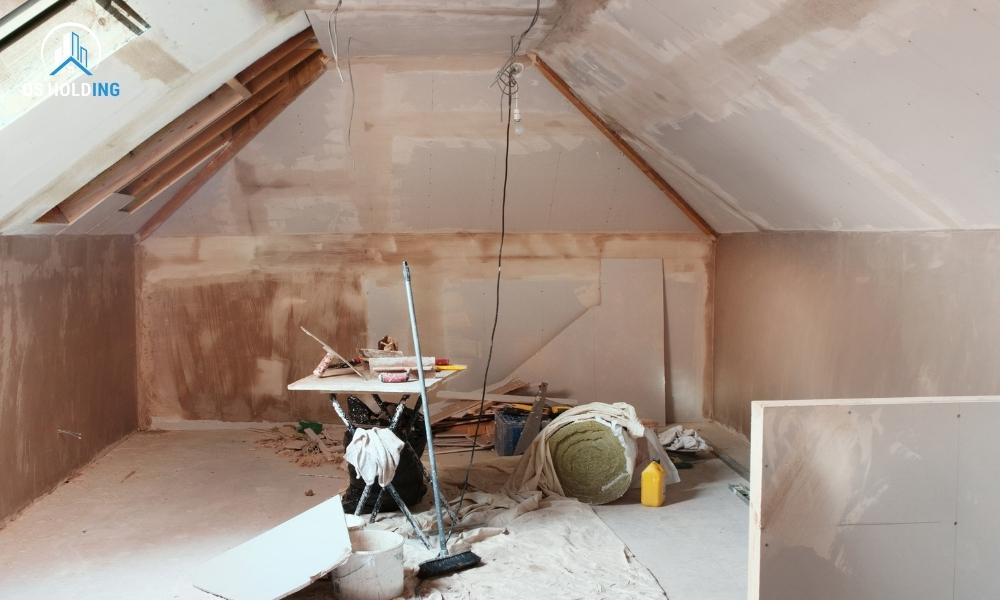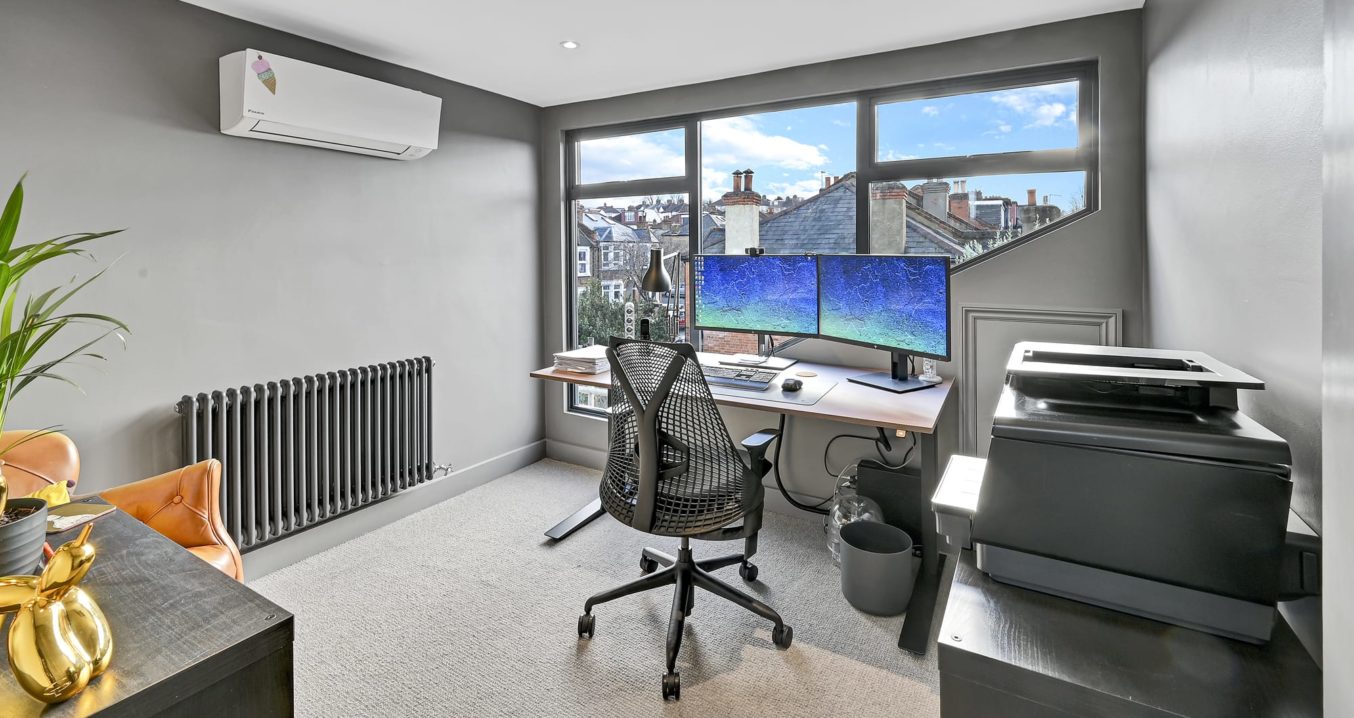
If you’re considering a home office loft conversion to create a private, personalised space to work at home from, then you’re in right the place.
The onset of Coronavirus has led to a huge increase in home working, with lots of us setting up makeshift offices in kitchens, bedrooms and under-stair nooks. But with the shift to remote working set to continue, converting your loft is the ideal solution for creating a quiet, comfortable workspace.
Here we outline the benefits of having a home office loft conversion, things to consider before going ahead, and ideas for your dream home office layout.
What are the benefits of a home office loft conversion?
Turning a loft into a multi-functional home office offers several lifestyle and financial benefits, including:
- Providing a private, dedicated office away from distractions
- Turning dead loft space into desirable living space, increasing the value of your home
- Creating extra square footage – converting your loft means there is often room to accommodate not only a home office but an additional bedroom and en suite
How much extra space can you get with a home office loft conversion?
This depends on the size of your current loft space, roof structure and where the loft staircase can be located.
To give a broad estimate, a small office loft conversion in a two-bedroom property can add 200 square foot of space, whereas a large office loft conversion in a three-bedroom property can create over 400 square feet, essentially adding an entire new floor.
What are the different types of home office loft conversion?
The type of office loft conversion you can acquire depends on your existing roof structure and property position.
There are four main types: First-Fix loft conversion, Dormer loft conversion, Mansard loft conversion and Hip to Gable loft conversion.
First- Fix Loft Conversion
Also known as a Shell Loft Conversion, this is the cheapest way to achieve a home working space. Here, a loft company undertake all the major planning and structural work.
For example, at Absolute Lofts we carry out the design process and aspects such as installing floor joists, altering the roof structure, and adding loft windows, doors and a staircase.
The project is then handed back to you complete. It’s the ideal option if you’re on a modest budget or are keen DIY-er.
Dormer Loft Conversion
A Dormer loft conversion will create a substantial home office, with room for other amenities, such as bedroom and en suite.
It involves building a box shaped extension into the existing sloped roof. This adds generous headroom and solid room proportions with vertical walls and horizontal ceilings. Unlike loft conversions which retain slanting walls, desks and shelves can sit flush against straight walls, maximising space.
The windows within the Dormer often house large windows, including floor to ceiling windows, bi-fold or French doors allowing plenty of natural light and giving amazing outdoor views – perfect for when you want to relax and take a breather.
Mansard Loft Conversion
Like a Dormer, a Mansard loft conversion delivers a considerable amount of extra space. Constructed in a similar fashion to a Dormer, the main difference is that face of the Mansard is slightly sloping, helping soften its external appearance.
A Mansard interior offers up an impressive amount of internal space. Depending on the size of the property, Mansards often have capacity for a home study, an extra bedroom and bathroom.
Hip to Gable Loft Conversion
A Hip to Gable loft conversion is suitable for hipped roof homes with slopes on all four sides.
To gain adequate head room, a hipped roof section is removed and replaced with a triangular shaped gable wall. To enlarge the space even further, a flat-roof Dormer can be added too.
A Hip to Gable and Dormer combination will create a seriously spacious home office with room for at least two desks and acres of storage. With room to spare, it is often possible to add a bedroom and cosy bathroom.
Is my home suitable for an office loft conversion?
The first question to ask is, is it a suitable height?
Measure the distance from the loft floor to the ridge beam. To create an office that feels light and airy, the ideal height is 2.2 metres+. This means once the flooring and ceiling are in place, you will have a ceiling height of around 2 meters.
The other key factor is the staircase height. Current building regulations require a minimum of 1.9 meters headroom height in the middle of the staircase.
Don’t worry if you don’t have the necessary height, it is often possible to achieve it by lowering the ceiling joists of the floor below or other structural engineering solution.
I live in a modern home with a truss roof, can I have an office loft conversion?
While the proportions of older Dublin Victorian or Georgian terraces or semi-detached properties lend themselves well to loft conversions, it is also possible to convert attics in modern post 1960s homes and new builds.
Construction involves removing the ‘W’ shaped fink trusses in the roof void, opening the space up, and reinforcing the joists to support the weight.
To check your home’s suitability, get in touch.
How much does a home office loft conversion cost in 2021?
The cost of an office loft conversion depends on a variety of factors, such as the type of conversion, the size of the roof space, how many rooms the design involves, and the level of internal finishing.
To give an indication, a Dormer loft conversion in 2021 starts from £35,000, while a Mansard starts around £38,000. A Hip to Gable, which is a more complex build, starts at approximately £45,000.
If an office loft conversion costs several thousands, wouldn’t it be better to just buy a garden office?
While this is tempting in the short-term, the cost of a high-spec garden office (up to £30k), rivals the cost of full Dormer loft (£35K+), while a First-Fix conversion is significantly less.
Additional pros and cons to consider include:
- Converting the loft opens the possibility of not just a home office but a further bedroom and en suite, increasing the home’s value. Latest figures show that adding a loft extension of this kind increases a home’s value by 20%.
An uplift of this percentage will comfortably cover the cost of doing the conversion if you decide to sell.
- Unlike a garden office, which is a single-purpose outdoor building, a loft office conversion can double as a comfy guest bedroom, games room or child’s bedroom – giving you room to grow.
- An integral part of the home, a loft office has comfy flooring, heating and lighting, plus a toilet and kitchen nearby. Trudging up and down the garden in all weathers to grab a cuppa or answer the door is less appealing and eats into productivity.
- If a garden office is left vacant even for a few weeks, deterioration can set in quickly. Regular maintenance of roof and timbers is needed to keep it in tip top condition.
- Unlike a loft office tucked away on the top floor, a garden office takes up otherwise useable garden space and, due to its construction, can be vulnerable to break-ins.
- As a garden office is a totally separate structure, the cost of heating a secondary building can soon add up. Furthermore, as a loft conversion is part of your main property this comes with additional security benefits (useful if you work on high value laptops or desktops) which a separate outbuilding may not benefit from.
Will I need planning permission for an office loft conversion?
Most loft conversions fall under permitted development rights, as such planning permission isn’t usually required.
Circumstances where permission might be needed is if your new loft will exceed 50 cubic meters or you live in a conservation area or listed building. Our loft conversion specialists will be able to advise you if planning is required and can help you submit the appropriate application.
Regardless of planning permission, the loft conversion will need to meet latest building regulations. These cover a host of structural details, such as structural stability, fire safety – providing an escape route and fire alarms, suitable stairs accessing the loft, and sound insulation.
Again, our expert loft team will take necessary steps to ensure a safe, fully regulation compliant new loft space.
How do I design a home office loft conversion?
This is the exciting part! Once you’ve established suitability for a loft office then it’s time to plan the best use of space.
Depending on your end goal, think about how much space you have to play with and layout possibilities.
Do you want to dedicate the entire space to a stylish home working environment? Or are you looking to maximise your investment by adding a bedroom and bathroom too?
Whether you’re planning a big or bijou loft office, here are key design considerations:
- Office furniture – what items do you want to make space for? A desk, office chair, monitor, printer, storage and shelves?
- Comfort – having an en suite on the same floor makes taking comfort breaks easy and relieves pressure (and queues!) for the main bathroom. You could even install a compact kitchen so you don’t have to go downstairs.
- View – what do you want to see while you work? Consider factors such as window placement and where the light will fall. Do you want a direct outside view from your desk?
- Light – a loft home office should be bright and airy. Think about ways to introduce light and airflow, such as a having a central skylight, over-sized windows or bi-fold doors.
- Features – lofts, especially in older homes. are full of rafters, beams and nooks which add visual interest, think about ways of integrating these into the scheme. Can you leave an exposed wooden beam for character?
- Storage – Most homes have pitched roofs creating handy spaces under the eaves. Think about how to use these areas effectively. For example, constructing low level storage cupboards or recessed shelves to keep the space calm and clutter free.
Looking for loft home office ideas? Here are some recent conversion projects we’ve developed.
Keen for a productive, stylish workspace, we created an L-shaped Dormer office loft conversion in this home in South East Dublin. A custom-created feature window overlooking the garden makes a stunning focal point and lets in plenty of natural light, making an idyllic work from home setting.
This Dormer office loft conversion in Walthamstow, East Dublin allowed for a large-scale loft conversion comprising an office space, music room and chill out area. The French doors and glass Juliet balcony let ample natural light in.
Spending more time working from home, our busy client wanted a spacious, separate place to focus. We added a generous Dormer office loft conversion to this modern Beckton home, in East Dublin. The build created a smart home study – the desk and PC sitting snugly in the eaves – with a super-sized TV screen for playing games. The loft extension also allowed for an extra children’s bedroom and full-sized family bathroom.
Not all home office loft conversions have to have to be cavernous, this Dormer office loft conversion in Poplar, East Dublin is a great example of a cosy working space. A large roof light illuminates the room while rustic real wood flooring adds character and warmth.
Ready to transform your loft to get the home working life you crave? Absolute Lofts are the industry experts, having over 35 years of designing and delivering exquisite loft conversions across Dublin and South East. Contact us today to arrange a free, no obligation site survey.
Note: Beside using OsHolding as your trusted Builders in Dublin, you can also get benefits from combining House Renovations with Attic Conversion, House Extensions, Kitchen Refurbishments, Bathroom Refurbishment, Painting & Decorating, Floor & Tiling, Bricklaying and House insulation Services. Also you can check our previous works in Gallery & Read about OsHolding Company or Simply contact us.
